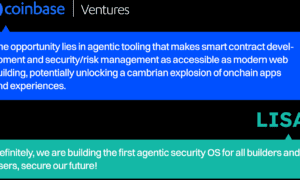Embedded insurance has changed how insurance products are delivered. Today, coverage appears within digital experiences people already use. Whether it’s added during a flight booking, bundled with a product purchase or included in a mobility app, insurance has become more accessible, immediate, and easy to adopt. For insurers, this creates new distribution channels. For consumers, it removes barriers to entry, making protection a natural part of their digital journeys.
However, ease of access is only a starting point. Customers now expect protection that adapts to their needs. They want coverage that is relevant, responsive, and continuous. Therefore, the future of embedded insurance depends on how intelligently it operates. By leveraging AI, insurers can move beyond selling static policies to deliver real-time, predictive protection, tailored to each user. In essence, AI helps reduce risk even before a loss occurs, shifting the model from reactive to proactive insurance.
Current State: Transactional, Contextual—but Reactive
Most embedded insurance offerings are attached to a point-of-sale interaction. In this model, coverage is solely determined by the transaction. The insurance is offered once at the moment of purchase, and does not adapt beyond that point. While these offerings are contextual they remain limited in intelligence. They neither change in response to customer behavior nor evolve as the risk environment shifts.
To be fair, this model does improve reach and simplify access to insurance. However, it does not enhance long-term engagement or provide insurers with a deeper understanding of the customer. It falls short when it comes to offering real-time risk mitigation. As a result, static, one-time embedded offerings risk commoditization, where insurers are forced to compete only on price or placement.
The Strategic Question: What Will Differentiate Tomorrow’s Leaders?
Insurers must ask what will truly set them apart if every competitor can embed insurance at checkout. Placement alone no longer offers strategic advantage. Differentiation must come from the intelligence embedded within the product.
In this scenario, the ability to personalize coverage in real time becomes the defining factor. Equally important is the capacity to adjust protection based on changing risk factors. It is AI that makes these capabilities possible.
Insurers that develop intelligent AI driven embedded offerings will be the ones that lead. After all, evolving customer expectations shaped by seamless digital experiences in sectors like fintech and retail, demand that insurance be more than just accessible. It must be contextually smart and continuously responsive, while being deeply integrated into everyday digital life.
The Role of AI in Transforming Embedded Insurance
Artificial intelligence is reshaping embedded insurance into a real-time, responsive service. It interprets behavioral and environmental data as it happens, adjusting coverage, pricing risk dynamically, and identifying potential loss before it occurs. This allows insurance to align more closely with a customer’s needs and situation.
Static, one-time policies evolve into continuous, adaptive protection that lives within the digital platforms people already use. The result is stronger engagement, improved retention, and a more intuitive insurance experience. Customer acquisition costs fall as embedded options convert more efficiently and reduce outbound marketing needs. Lifetime value rises as policies grow with the user. AI helps spot problems early and prevent losses, which reduces claims costs and makes insurance proactive instead of reactive.
Core AI Technologies Powering Intelligent Embedded Insurance
Embedded insurance becomes truly intelligent when insurers bring together the right mix of AI technologies. These tools help them respond faster, make better decisions, and tailor protection to what customers actually need, right when they need it.
- Machine Learning (ML) helps insurers spot trends in how people behave, what they buy, and how risks develop. It supports real-time decisions on pricing, approvals, and policy changes. The more data it processes, the sharper its predictions become.
- Natural Language Processing (NLP) makes it easier for people to understand insurance. It powers virtual assistants and chatbots that explain coverage in plain terms, answer questions, and guide users toward the right product. It reduces guesswork and builds confidence.
- Computer Vision and Sensor Data allow insurers to see what’s happening in the real world. Photos from smartphones or dash cams help assess damage. Data from smart devices like thermostats, wearables, or car sensors can help prevent problems before they turn into claims.
- Graph AI looks at how people, devices, and transactions are connected. It can spot strange or suspicious patterns that might point to fraud. It’s especially useful in high-speed digital environments where things change quickly.
- Streaming Tools like Kafka and Flink make it possible to process incoming data instantly. They allow insurers to adjust coverage, change prices, or start claims as soon as new information comes in, making the experience feel fast and effortless.
- API-First Systems help insurers connect their AI tools directly into the apps and platforms people already use. Microservices and open APIs keep everything working smoothly behind the scenes, without adding extra steps for the customer.
- Privacy-Safe AI ensures that personal data is used responsibly. Techniques like federated learning and differential privacy help insurers stay compliant with data rules while still learning from what’s happening. This builds trust and keeps customers protected in every sense.
Real-World Success Stories in Intelligent Embedded Insurance
- Buildertrend, a U.S.-based construction management platform, saw a 92% policy uptake, retained over 97% of its customers, and boosted its monthly recurring revenue by 12% after embedding AI-powered builders risk insurance from Assurely into its project workflows.
- MediaMarkt, one of Europe’s leading electronics retailers, shortened policy issuance time from 20 minutes to just five, improved attachment rates on consumer finance products, and delivered a better customer experience both online and in-store after integrating an AI-enabled insurance solution developed by Decerto into its extended warranty process.
- uShip, is another example of a U.S.-based logistics platform, which achieved a 10x return on investment within months by integrating AI-driven embedded insurance from Tint into its shipping process. The system evaluates shipment risks in real time, factoring in details like what’s being shipped and the delivery route. This enables tailored coverage right at checkout and simplifies the entire claims process when things go wrong.
From smarter risk assessment and faster underwriting to more personalized customer experiences and higher retention, the benefits are clear and measurable when AI and embedded insurance come together.
Challenges Slowing the Adoption of AI in Embedded Insurance
But for many insurers, getting there isn’t easy. Despite the promise of AI, real obstacles stand in the way. Legacy systems, siloed tools, and shallow platform partnerships often make it difficult to deliver the seamless, intelligent protection customers now expect. In many cases, the technology exists but it’s not connected or fast enough to truly make a difference.
Let us take a closer look at these challenges:
Insurers Can’t Get the Right Data Fast Enough
Most insurers don’t have direct access to the real-time data AI needs. Information from partners is often delayed or incomplete. That makes it hard for AI to respond in the moment or personalize effectively. Instead of precision, insurers are left guessing.
Old Systems Are Slowing Everything Down
Many insurers still run on legacy tech that wasn’t built for flexibility or speed. These systems can’t handle real-time updates or dynamic pricing. Even smart AI tools hit a wall when the back-end can’t keep up. That limits impact across the board.
AI Tools Don’t Work Together
Fraud detection systems, pricing engines, and customer service chatbots often run on separate tracks, each working with its own data and objectives. Because these tools rarely interact or share insights, insurers lose the ability to form a complete view of the customer. This fragmentation not only limits the potential of AI but also results in inconsistent, impersonal experiences for policyholders.
Partnerships Are Too Shallow
Embedded insurance depends on strong ties with platforms like apps and retailers. But many of these relationships are surface-level. Without shared systems and data, AI can’t work in real time. That limits personalization and weakens results.
Mismatches in skillsets
Finding the right talent is difficult because AI in insurance needs a rare blend of skills. Most data experts don’t understand insurance regulations or workflows. Many insurance professionals aren’t trained in AI or machine learning. This gap slows down progress and stalls implementation.
Conclusion: The Shift from Embedded to Intelligent Is Already Underway
Embedded insurance has made protection more immediate and accessible. This alone no longer meets the expectations of today’s customers. People now expect coverage that adjusts in real time to their lives. Artificial intelligence enables insurers to meet this need by predicting risk, adjusting coverage, and maintaining engagement beyond the point of sale.
Delivering intelligent embedded insurance requires collaboration across the ecosystem. Platforms offer access to real-time data and user behavior. While insurtech’s provide tools and infrastructure that accelerate innovation, regulators define the standards for fairness, transparency, and trust.
Trigent enables this transformation through its Trigent AXLR8 Labs that brings together GenAI accelerators, domain-rich code libraries, and deep industry expertise. With this, insurers can embed intelligence across the product lifecycle and deliver protection that evolves with the customer.





























